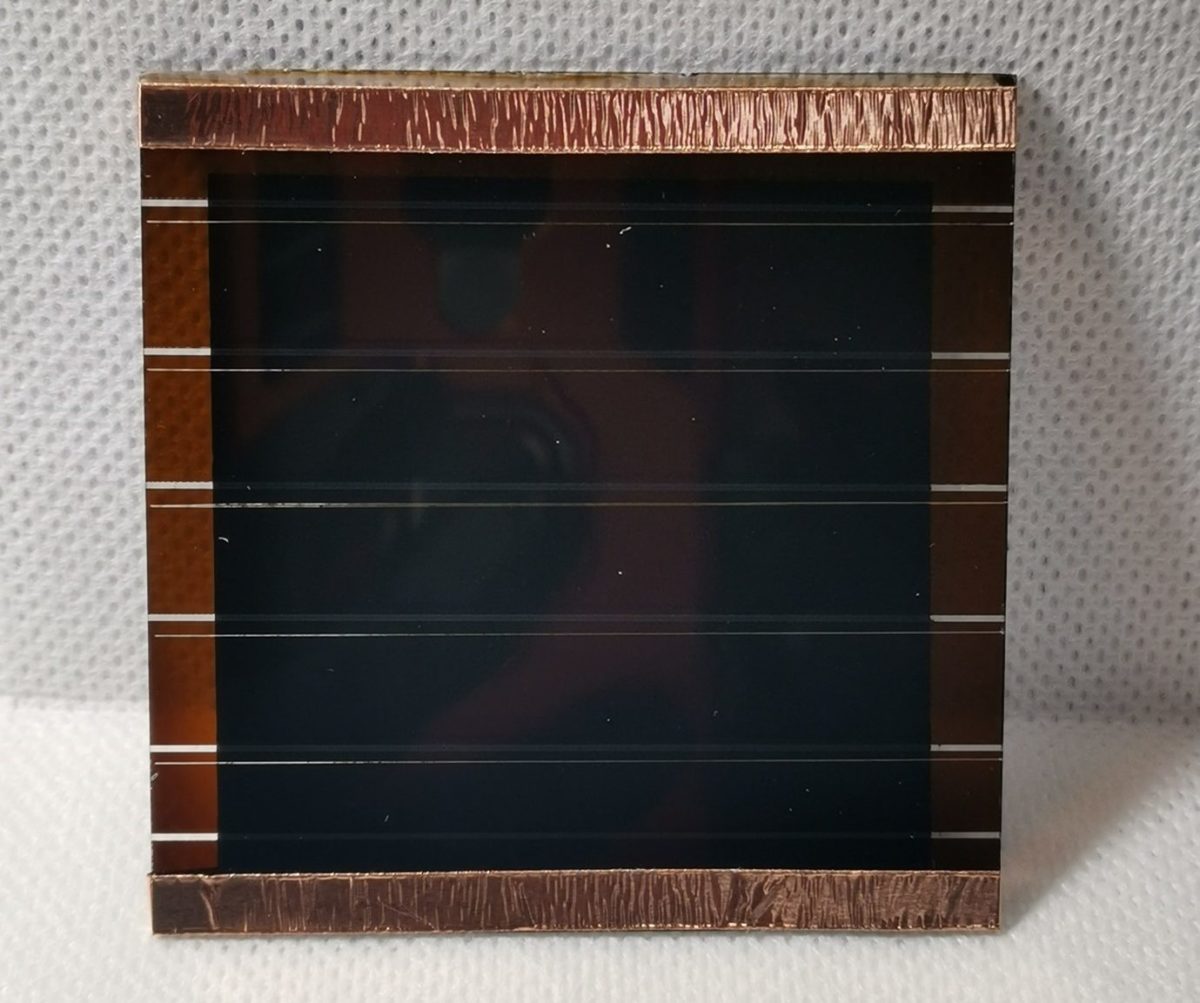GreatCell Solar has achieved a power conversion efficiency of 32% for a 100% inorganic perovskite cell designed for indoor applications.
“This is a single-junction, single cell with linear conduction width of 1.5 cm to simulate product-sized cells,” the company’s managing director, Paul Moonie, told pv magazine. “The inorganic perovskite crystallises at room temperature, so processing is compatible with common flexible substrates.”
The Australian perovskite solar cell maker said the result is a world record for inorganic perovskite solar cells.
“It was not certified by an independent entity, as there is no established independent certification for low-light solar cell performance,” Moonie said. “However, we do comply with all relevant international standards such as IEC 63163, including for long-term stability and durability testing.”
The company built the cell with roll-to-roll coating technology. It designed the cell without a hole transport layer (HTL) and using carbon composite back contact, which it claims has excellent electrical conductivity.
“We are in the process of moving from semi-tech to full-scale production using this manufacturing technique,” he said, noting that, with further improving, the optoelectronic quality of perovskite and its interfaces, plus carbon composites-based back contact, may soon reach an efficiency of 40%. “Our aim is not just producing high-performance and long-life solar cells, but also utilising low-cost materials. In saying that, our efficiencies are currently much higher than off-the-shelf indoor PV, and our potential customers are satisfied with our performance to offer advanced power solutions to their Internet-of-Things (IoT) devices.”
In 2021, GreatCell acquired a solar module factory in Australia from Tindo Solar. In May, it announced plans to expand the factory.
This content is protected by copyright and may not be reused. If you want to cooperate with us and would like to reuse some of our content, please contact: editors@pv-magazine.com.









By submitting this form you agree to pv magazine using your data for the purposes of publishing your comment.
Your personal data will only be disclosed or otherwise transmitted to third parties for the purposes of spam filtering or if this is necessary for technical maintenance of the website. Any other transfer to third parties will not take place unless this is justified on the basis of applicable data protection regulations or if pv magazine is legally obliged to do so.
You may revoke this consent at any time with effect for the future, in which case your personal data will be deleted immediately. Otherwise, your data will be deleted if pv magazine has processed your request or the purpose of data storage is fulfilled.
Further information on data privacy can be found in our Data Protection Policy.